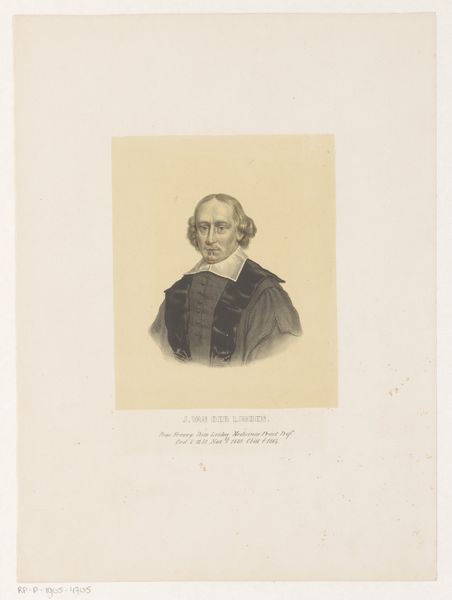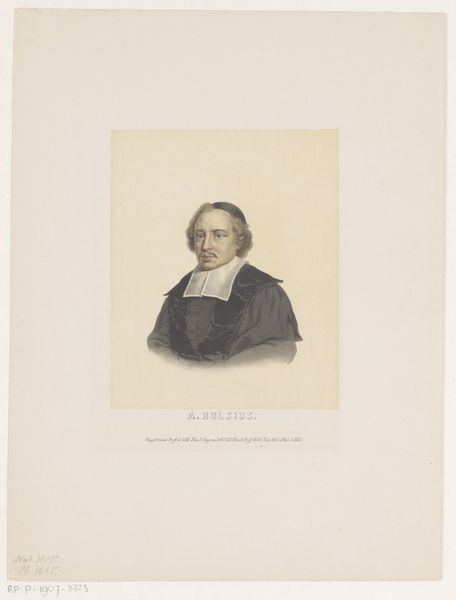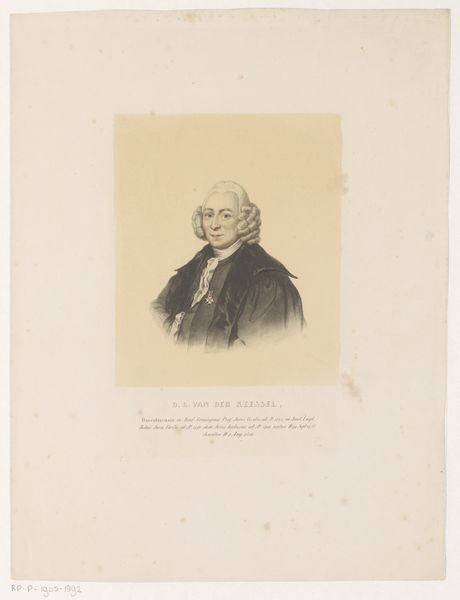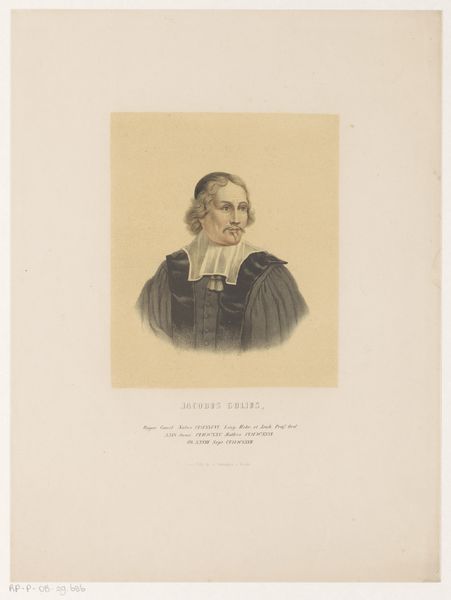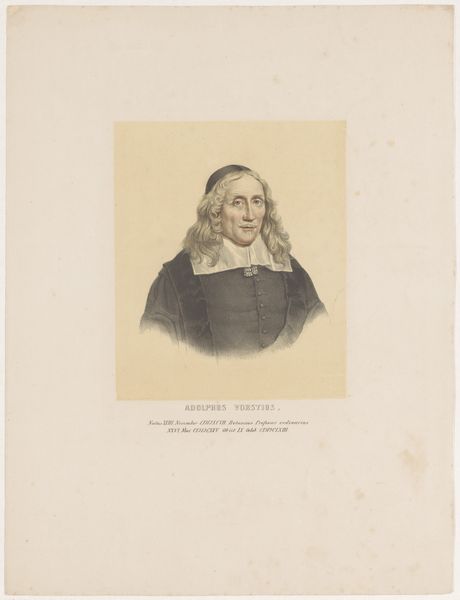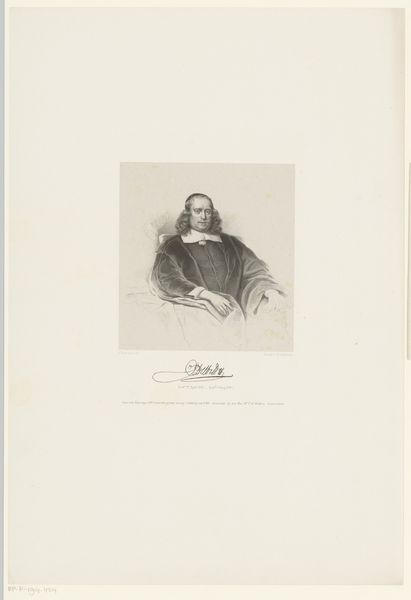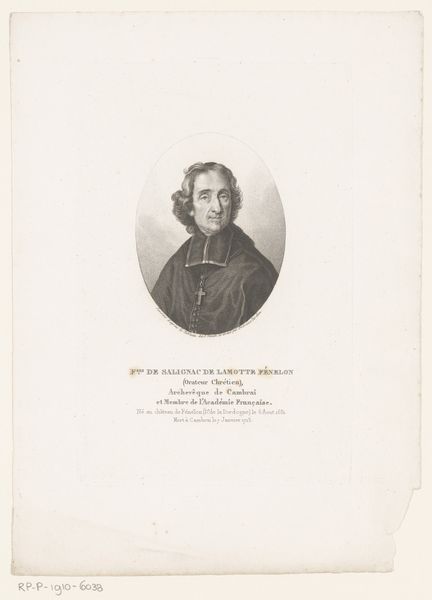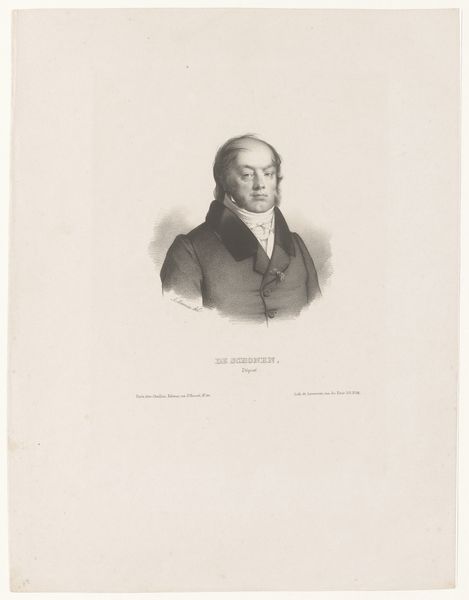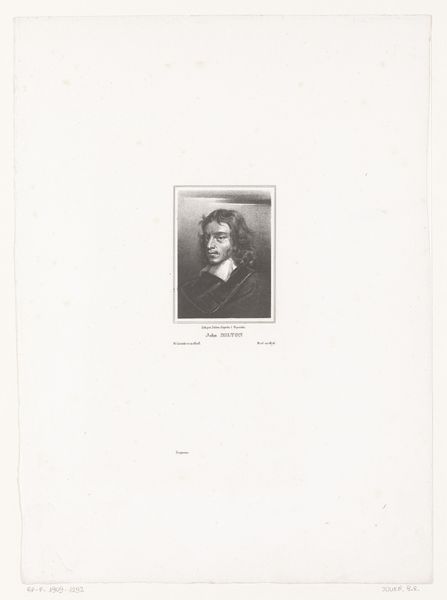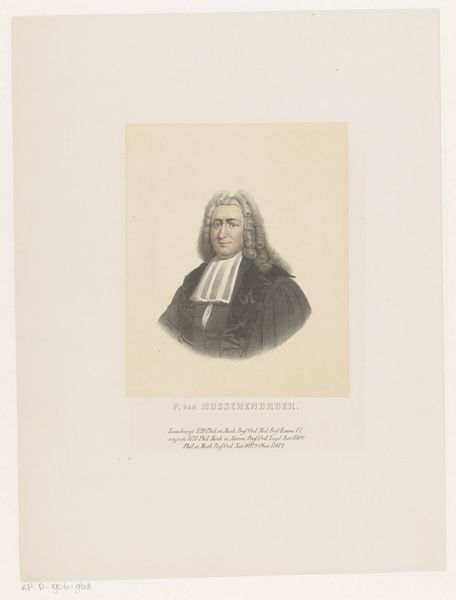
print, engraving
#
portrait
#
pencil drawn
# print
#
pencil drawing
#
history-painting
#
engraving
#
watercolor
Dimensions: height 349 mm, width 258 mm
Copyright: Rijks Museum: Open Domain
Leendert Springer created this print of Daniël Heinsius sometime in the 19th century, using a technique called lithography. Lithography allowed for the relatively quick and cheap reproduction of images. This was crucial in an age of burgeoning print culture. Unlike earlier printmaking techniques that required laborious carving, lithography is based on the simple principle that oil and water don't mix. The artist would draw on a smooth stone surface with a greasy crayon, then treat the stone so that ink would adhere only to the drawn areas. The resulting image has a soft, almost tonal quality, quite different from the sharp lines of an engraving. Prints like this made images accessible, contributing to the rise of a mass audience for art and information. It’s a process deeply entwined with the social and economic changes of the time. So, next time you see a print, remember the ingenuity and labor-saving potential of lithography, and its impact on the circulation of knowledge and visual culture.
Comments
No comments
Be the first to comment and join the conversation on the ultimate creative platform.
